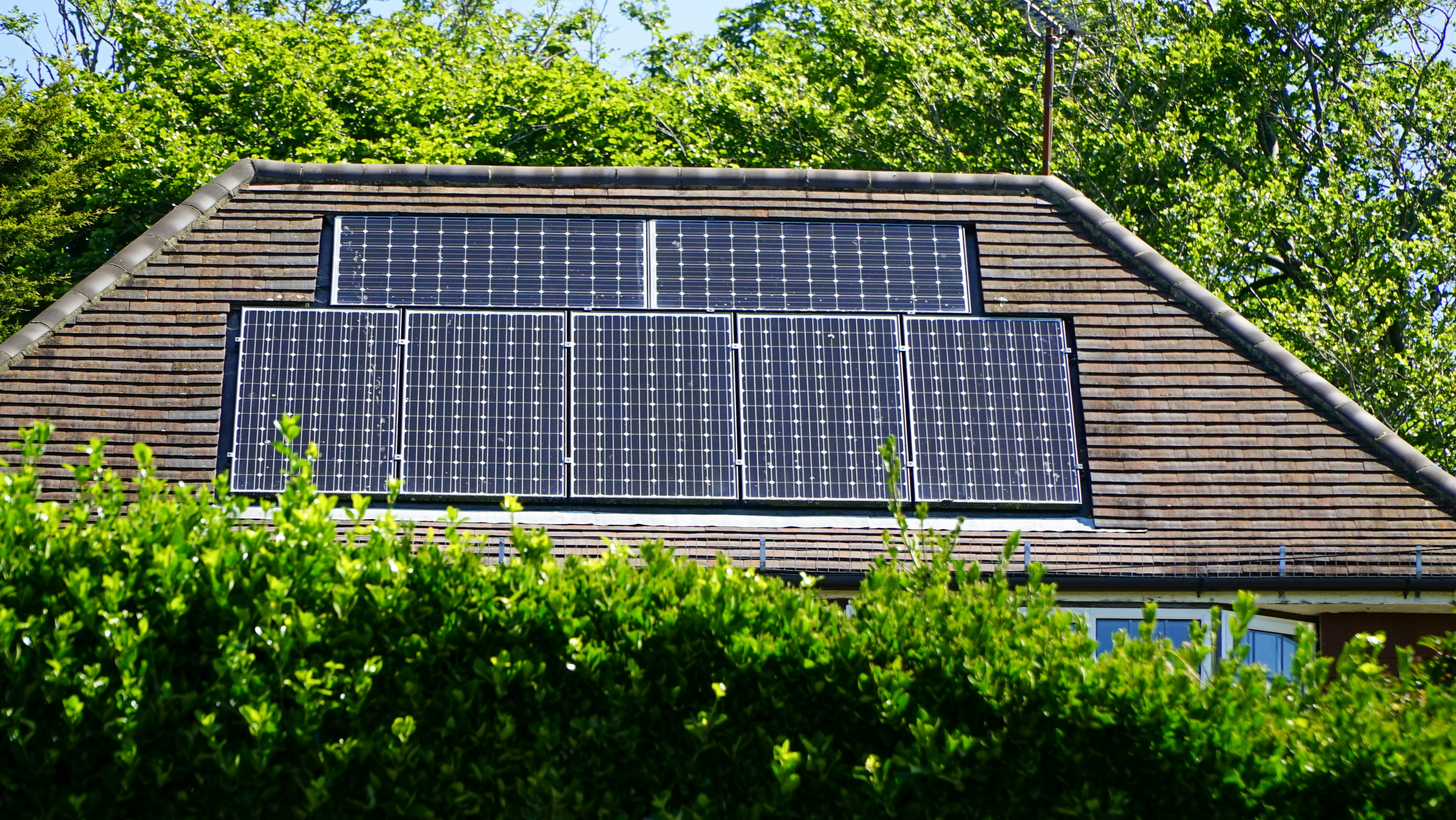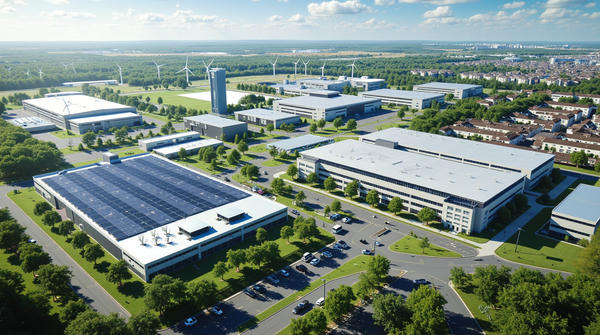2025 Trends for Energy Communities and Energy Sharing
Energy Communities and Energy Sharing initiatives are paving the way for a future where individuals and companies actively participate in the production, distribution and consumption of clean energy.

Energy Communities and Energy Sharing initiatives are paving the way for a future where individuals and companies actively participate in the production, distribution and consumption of clean energy.
According to a study by the European Commission's Joint Research Centre, citizen producers, or "prosumers", could generate twice as much energy as today's nuclear power plants, reaching around 1,560 TWh (or 78 billion euros) in Europe by 2050.
Energy Communities and Energy Sharing initiatives are paving the way for a future where individuals and companies actively participate in the production, distribution and consumption of clean energy.
Faced with climate challenges and the need for an effective energy transition, how can we rethink the way we produce, distribute and consume energy? Energy communities and energy sharing are emerging as innovative solutions, but their implementation raises many questions: Which models are the most efficient? How can we guarantee their economic viability while maximizing their environmental impact?
In this article, we take an in-depth look at the different energy-sharing models, comparing them according to key criteria: their energy efficiency, environmental impact, economic viability and ease of implementation.
Energy Sharing Models
Peer-to-peer (P2P)
In the peer-to-peer model, individuals or companies exchange surplus energy directly. This decentralized system encourages community involvement and gives participants greater control over their energy needs. For example, the social enterprise Les Petits Riens (Spullenhulp) has set up a peer-to-peer energy sharing system in Brussels to optimize the use of renewable energy produced and consumed at its various sites.
One-to-Many
The "one-to-many" model implies that a single entity shares its energy with several beneficiaries. This could apply to a large renewable energy project supplying households or businesses on the scale of an eco-district or an entire city. For example, a large industrial company equipped with solar panels could share its surplus energy on weekends with its employees, thus offering a benefit in kind in the form of green energy.
A concrete example of this "one-to-many" model is the initiative implemented at the emblematic Tour & Taxis and Gare Maritime sites in Brussels. Private developer Nextensa, owner of a 3 MWp photovoltaic production facility, sells its surplus energy to surrounding residential buildings, including subsidized housing. This approach offers residents local, renewable and affordable energy managed with WeSmart.
Many-to-One
In this model, several small entities pool their surplus energy for an aggregator or central entity. This enables more efficient management of energy resources. For example, five municipalities in Flemish Brabant have set up a cooperative to share solar energy from public buildings with a large consumer. This type of grouping, combining production, storage and flexibility, should develop thanks to players grouping networks of active users, such as solar installers or suppliers of connected equipment like heat pumps.
Legal Models
The legal frameworks for Energy Sharing Communities vary according to European and local regulations.
- Renewable Energy Community (REC): These communities are often limited geographically. For example, in France, RECs for collective self-consumption are limited to a perimeter of 2 km, extended to 20 km in rural areas.
- Citizen Energy Community (CEC): CECs, on the other hand, have no geographical restrictions and allow the participation of large corporations, provided they do not control governance.
- Energy sharing within the same building: In regions such as Brussels and Wallonia, this model enables significant reductions in network costs, offering financial advantages to condominiums or social housing.
- Peer-to-peer: Regions like Brussels and Flanders allow P2P exchanges on a regional scale.
- Virtual Power Purchase Agreements (PPA): These financial contracts enable flexible exchanges on European markets, favoring renewable energy projects.
These models illustrate a diversity of frameworks, from highly regulated schemes to more flexible systems.
Trends: A growing need for local sharing
Trends in Energy Communities and Energy Sharing reflect a rapidly changing energy sector:
- Growing demand for electrification: With the rise of electric vehicles, heat pumps and other needs, the demand for electrification is driving the adoption of sustainable practices.
- Maximizing local renewable energy production: In France, public buildings and parking lots are required to integrate solar infrastructure.
- Optimization through dynamic pricing: Dynamic pricing strategies encourage consumption to match supply and demand in real time.
- Virtual batteries: Virtual batteries are emerging as an innovative solution for optimized energy management and storage.
Evolution towards Multi-Energy Communities
Energy communities are evolving beyond simple electricity sharing to become integrated multi-energy ecosystems:
- Collective storage: shared battery solutions on a neighborhood scale optimize collective self-consumption and reduce consumption peaks.
- Hydrogen storage: Green hydrogen is emerging as a seasonal storage solution, enabling surplus renewable energy from the summer to be stored for the winter.
- Flexibility management: communities develop sophisticated strategies to adapt their consumption in real time, maximizing the use of local resources.
- Intelligent EV recharging: the integration of collective recharging stations optimizes the charging of electric vehicles according to local production.
- Thermal synergies: communities exploit heat and cooling networks, creating circular energy systems on a local scale.
This multi-energy, multi-solutions approach strengthens the resilience of communities while maximizing their positive environmental impact.
Helping the network and adapting demand to production
The rapid evolution of the energy mix, with the increase in renewable energies and growing electrification (electric vehicles, heat pumps), is creating major challenges for distribution system operators (DSOs). Consumption peaks require considerable investment in network infrastructure, which could reach several billion euros over the next few years. The creation of local energy loops and the local consumption of renewable energy are therefore becoming essential.
Regulatory developments 🇪🇺
The Commission and the European Parliament are currently working on several regulatory initiatives, building on existing directives (Directive 2018/2001/EU on renewable energy RED II and Directive 2019/944/EU on the internal electricity market), to simplify and harmonize the regulatory framework for energy communities. The "Fit for 55" package and in particular the RED III Directive (2023/2413) further strengthen this framework with new targets for 2030:
- Simplifying energy trading: new directives are under discussion to facilitate cross-border trading and reduce administrative barriers between member states.
- Modernization of PPAs: A new regulatory framework is proposed to standardize power purchase agreements (PPAs) and enable more accurate real-time measurement of the energy exchanged.
- Administrative simplification: proposals to simplify the process of creating energy communities and energy exchanges.
A video explaining future regulatory changes to facilitate energy sharing at market design level
Conclusion
Energy communities and energy sharing represent a promising future for a sustainable energy transition. However, regulatory adjustments will be needed to simplify the creation and operation of these initiatives.
Economic trends and new technologies, such as virtual batteries and dynamic pricing strategies, are paving the way for more efficient and accessible energy communities. These innovations, combined with regulatory developments, will help shape a sustainable and equitable energy system for all.






